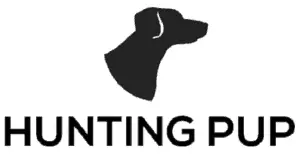Can you guess how long humans have kept domesticated dogs? I bet you didn’t think the answer was some 15,000 years ago. One of the reasons why people decided to keep these animals as pets is because they made, and still do make, excellent hunting buddies. From sniffing tracks to traversing rugged terrains, what would a hunter do without these handy companions?
That said, if you’d like to get a dog that you can take along on your hunting expeditions, it might be a good idea to get one that doesn’t shed. Even if you’re not allergic to dog’s fur, getting a non-shedding hunting dog is beneficial because it means you’ll have less pet hair to clean up.
What Hunting Dog Breeds Don’t Shed
There are several dog breeds that don’t shed such as Bichon Frise, Havanese, Chinese Crested and Scottish Terrier. However, very few of these are suited for active sports like hunting. If you’ve been scouring the web for hunting breeds that don’t shed, we’ve done the legwork of research for you. Below are five non-shedding dog breeds that are also great for hunting.
Here are some quick links to jump down the article to the different breeds profiled:
Lets get to discussing these breeds!
Pudelpointer
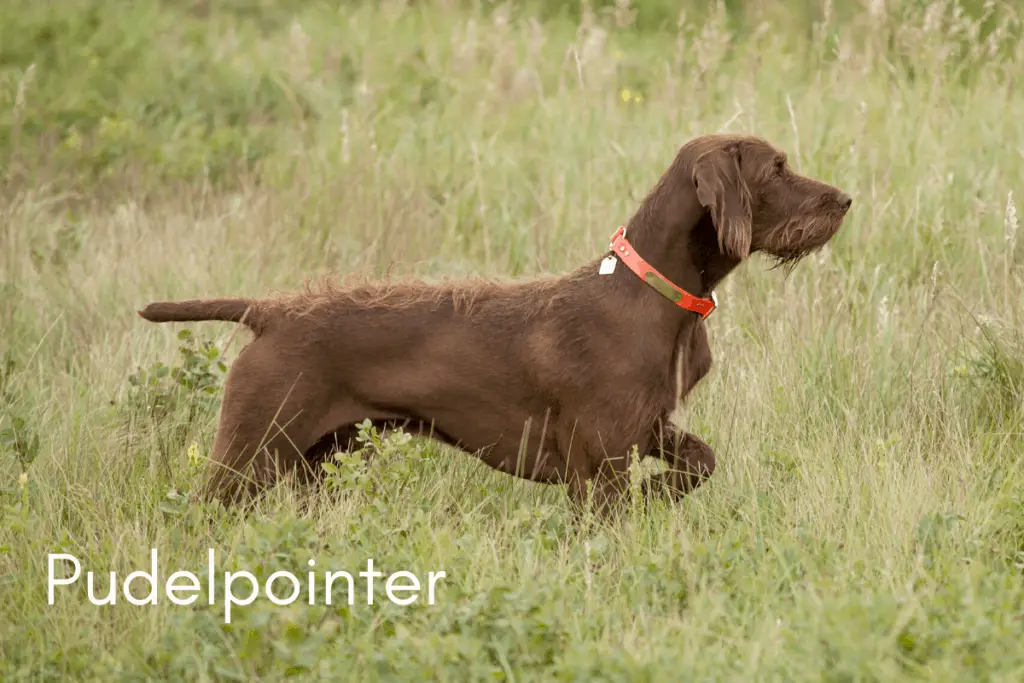
Check the spelling this is no designer Poodle cross. This is a hardcore hunting dog! In fact, the only thing wrong with this dog, in my opinion, is the name. Buy one and you will spend all your time telling people it’s not like a Labradoodle! But buy one and you likely will never buy another breed. A medium to large size breed, the Pudelpointer is a superb hunting breed that is a low shedder. I have worked with a number of these dogs and find some individual dogs shed more than others, but as a breed shed far less than something like a lab or English Setter. They have a double coat, which consists of a medium-long rough coat and a dense undercoat. Due to the structure of their coat, these dogs shed seasonally meaning they don’t require much in the way of grooming.
Types of Hunting: (Versatile/Pointing: Upland and Waterfowl)
The Pudelpointer was developed specifically for hunting. In fact, this is one of the most versatile hunting breeds. Not only are they good at tracking but they’re also adept at pointing and retrieving.
For instance, they tend to work at a medium to a fast pace- an aspect that is very common among pointer hunting dogs.
Similarly, they hold up extremely well in cold and harsh conditions- something that German Pudels are well known for. These dogs hunt just as well in water as they do on land. With their watertight fur, massive paws and lean bodies, it’s not surprising that they’re able to outrun and outswim most of their gundog counterparts.
Another hunting trait that makes the Pudelpointer an ideal choice entails their trainability. They’re easily trainable and can handle a decent amount of pressure.
Temperament:
Their temperament is another factor that qualifies them for hunting. They’re very intelligent and adaptable. A Pudelpointer can keep its energy levels up; helping you hunt all day long. Then once they go back home, they’ll be happy to relax alongside their owner or have some playtime with kids.
It is this tireless work ethic that has many owners use the breed as a hunting companion even in their older years.
Size:
As mentioned early on, the Pudelpointer can be medium or large-sized. Most of them average between 21 and 26 inches tall, and weigh about 44 to 66 pounds.
Price:
Despite their hunting finesse, the Pudelpointers aren’t the easiest breed to come by. Since breeders have to comply with stringent regulations, you’ll find that the numbers of this breed on the market are quite low. As a result, the price of a puppy can be high reaching up to $1000. You likely won’t find a breeder that sells to a non-hunting family. Expect to wait for a pup, and needed to be on a list, also expect a bit of an interview by the breeder (they are passionate about finding a good hunting home for their pups. Need a place to start almost everyone will agree Bob Farris at Cedarwoods Kennels is the man to talk to, but NAPPA breeders alliance is a great resource.
Clubs and Organizations:
This breed is NOT recognized by the American Kennel Club (AKC). Proponents of the breed hold this as a positive saying the show side of AKC often shifts breeders focus away from breeding with hunting as the primary focus to breeding for confirmation. NASTRA and NAVHDA events are open to Pudelpointers
Wirehaired Pointing Griffon
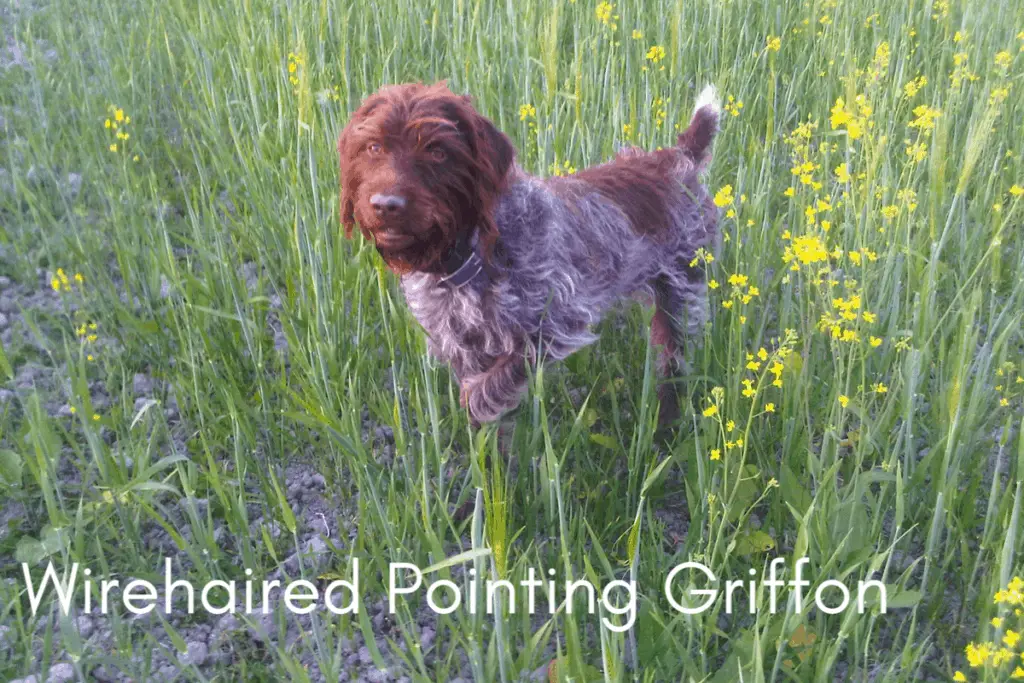
Developed single-handedly by a Dutch hunter, the Griff is sweet-natured and extremely loyal. Due to their expressive face and playful character, it’s not easy to think of griffons as athletic dogs. But under all that shag, they have a well-muscled body and alertness that makes them perfect for hunting. I have owned this breed and can personally vouch for the low shed nature. You might need to “strip” their guard hairs once a year, but you will find very little hair naturally shedding around your house or on your furniture. To avoid needing to strip the dog, just hunt it hard in heavy cover, the dog’s hard hunting style and thick brush will do a lot of the work for you. If you are like me, owning a Griff you might forget how much of a pain dog hair is and pick a heavy shedding breed for your next dog and regret it, but hey everyone has to own at least one huge running field-bred English Setter in their life right?
Types of Hunting: (Versatile/Pointing: Upland and Waterfowl)
One of the things we love most about Griffons is that they’re very versatile hunters. Griffons will point birds. They are as comfortable hunting upland game birds, like woodcocks, grouses and pheasants- as they are swimming to retrieve a waterfowl. To that regard, they make great retrievers and pointers. Of the pointing dog breeds, Griffons are considered closer range dogs; meaning they tend to stray far from the hunter looking for birds. Griffons tend to stay under 100 yards from the hunter as opposed to a big running English Pointer that could range as far as a mile from the hunter. Range is a preference consideration for an individual hunter, there is no right or wrong range. However, if you want a dog that hunts close its often easier to start with a breed that is typically a closer range hunter like the Griffon.
Temperament:
The general temperament of the Griff is affectionate, energetic, trainable, and outgoing. Often described as goofy and comical, likely due to their shaggy However, it’s their ability to think independently and embrace responsive direction that makes them excellent hunters.
Size:
Being a medium-sized breed, Wirehaired pointing griffons usually grow to between 22 and 24 inches for males and 20 to 22 inches for females. Their average weight ranges from 50 to 60 pounds. In case you plan to breed your dog in future, you can expect a litter of anywhere from 6 to 9 puppies.
Price:
The average price of a puppy is between $600 and $1200. They are a rare breed so it can be a challenge to find a breeder and expect to be added to a waiting list for a good pup. Looking for a place to start, check your local NAVHDA chapter. Their Natural Ability testing system will give hints to who is breeding consistently good hunting dogs.
Clubs and Organizations:
This breed is recognized by several kennel clubs and organizations like the American Kennel Club (AKC), Canadian Kennel Club, North American Versatile Hunting Dog Association (NAVHDA) and more. AKC trails, NASTRA, NAVHDA events are open to Wirehaired Pointing Griffons.
American Water Spaniel
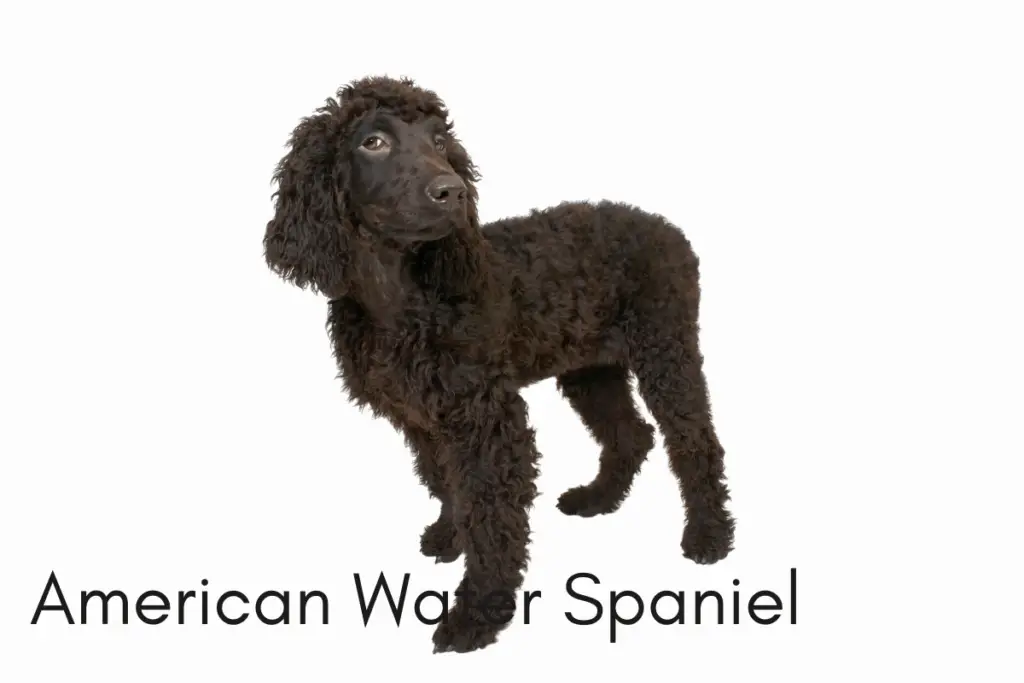
If you’re looking for a hunting dog that doesn’t produce much dander and sheds minimally, the American Water Spaniel is your best bet. Have interactive with a number of dogs from this breed and can personally vouch for its low shed coat. As its name would lead you to believe, this breed was developed in the United States. In fact, it was bred to be an all-round hunting breed from the beginning.
Types of Hunting: (Flusher/Retriever – Upland and Waterfowl)
The American Water Spaniel is a methodical hunter, with an incredible scenting ability and bird sense. In the field, these dogs move at a reasonably steady pace. Although they don’t move with speed as their English Springer Spaniel counterparts, they’re not too slow either. Instead, they make deliberate moves, usually in a sweeping fashion.
Like Wirehaired pointing griffons, the AWS can hunt both upland game and waterfowl. But the AWS is a flushing dog, not a pointer. When upload hunting the AWS will rush in and try to chase the bird into the air for the hunter to get a shot, where the Griffon will stop and point a bird when it finds it allowing the hunter to flush the bird for the shot.
Temperament:
In addition to their scenting capability, other traits that make this breed ideal for hunting include their intelligence and friendliness. They’re also protective and easily trainable. This breed tends to be more sensitive and won’t tolerate a heavy-handed trainer.
Size:
American Water Spaniels are on the smaller size for hunting dog breeds. They stand from 15 to 18 inches and weigh 25 to 45 pounds. I would love to see one of these little rockets linebacker a full-grown goose, however, as stated above the ones I have met have been a bit timid. I hold out that if you could promise me a bold and fearless American Water Spaniel it would be the perfect pocket hunting dog. Easy to travel with, now shedding, not big enough flip your canoe on a duck hunt… but would get the retrieving/flushing job done!
Price:
Unfortunately, they are a little pricey compared to other hunting breeds. Expect to pay an average of $800 to $1600 for a puppy. These dogs are also very rare, expect to have to wait for a good pup, so if you want an AWS pup, find a good breeder and get on their list asap. A good place to start might be Little Brownies Kennel.
Clubs and Organizations:
American Water Spaniel is an AKC recognized breed. One could expect to participate in any retriever / flusher trails open to AKC breeds as well as AWSC, NAHRA events.
Irish Water Spaniel
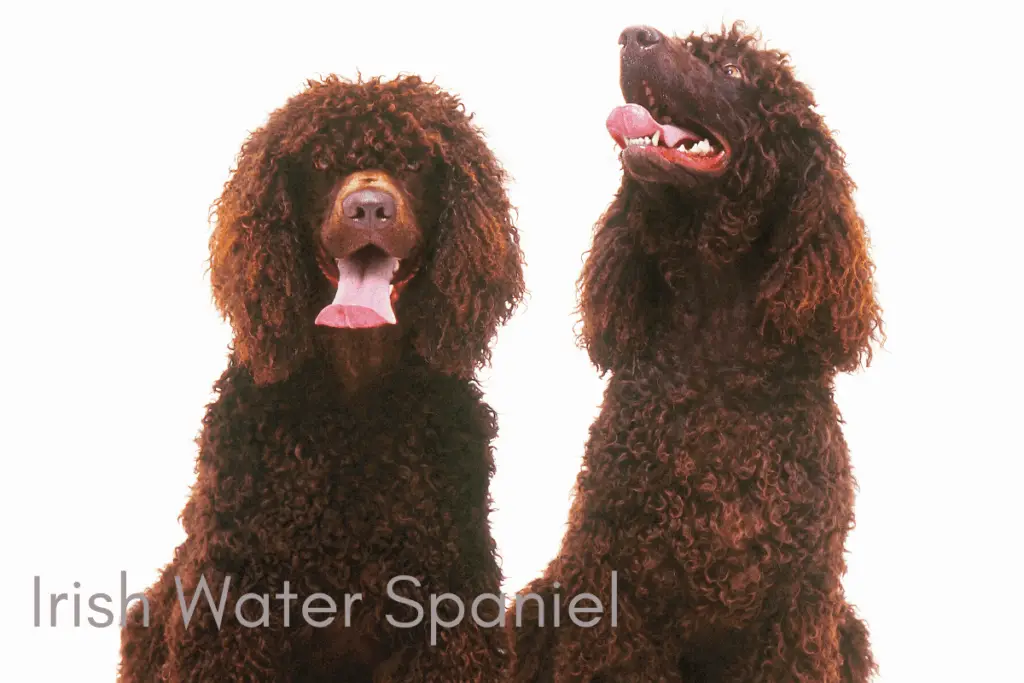
Looking for a versatile hunting breed that rarely sheds? The Irish Water Spaniel is a pretty good choice.
As you might have guessed from its name, this breed originated from Ireland. At the time, they were purely bred as gun or hunting dogs. This explains why they’re so adept at hunting both inland and in water.
Types of Hunting: (Flusher/Retriever – Upland and Waterfowl)
Irish Water Spaniels are particularly suited for hunting in marshy terrains. They make excellent swimmers thanks to their webbed feet. As a result, they’re often used to retrieve waterfowls and other small game birds. These dogs are widely recognized by a variety of kennel clubs and organizations. These include AKC, The Irish Water Spaniel Club of America (IWSCA), and Canadian Kennel Club.
Temperament:
The temperament of the Irish Water Spaniel ranges from very friendly and affectionate to being aloof. The character they portray mainly depends on who they’re interacting with. So if you’ve lived with them for awhile and are planning to take them hunting, they’ll be friendly and protective.
However, if you plan to bring a stranger, you might want to rethink your choice of hunting dog. Luckily, they’re highly-trainable, which means they can be trained to be receptive.
Other than their webbed feet, another physical trait that makes them suited for hunting is their strong bone structure. With their muscular build, they can tackle predators easily and withstand other external elements.
Size:
The males stand at 22 to 24 inches while the females are 21 to 23 inches tall. In terms of weight, male Irish Water Spaniels weigh 55 to 65 pounds. The females are much lighter, tipping the scales at 45 to 58 pounds.
Price:
Like the American Water Spaniel, the puppy of this breed is a little expensive. It ranges between $800 and $1000.
Clubs and Organizations:
Irish Water Spaniel is an AKC recognized breed. One could expect to participate in any retriever/flusher trails open to AKC breeds as well as AWSC, NAHRA events.
Standard poodle
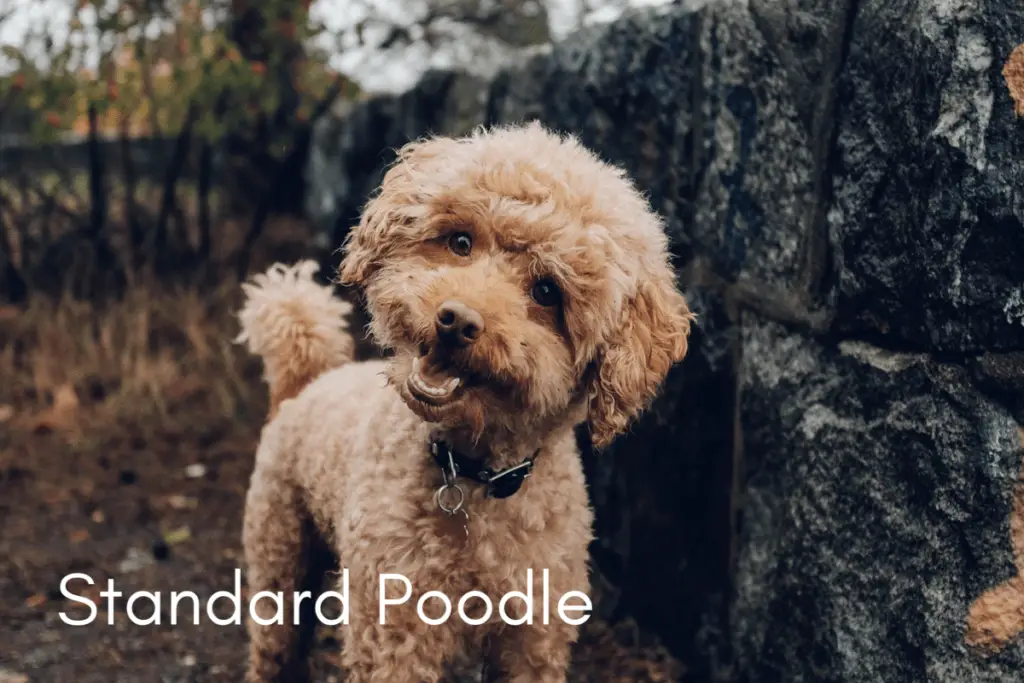
To some hunting aficionados, the concept of a standard poodle traversing the woods to help in hunting sounds as familiar as the hunting activity itself. But for most people, they can only associate this breed with fancy ribbons, impressive hairdos and a regal attitude.
If you know the poodle only as that tiny, adorable lapdog, you should rethink your description because these pups have so much more to offer.
Types of Hunting: (Retriever – Waterfowl)
As a matter of fact, poodles were originally bred as water retrieving dogs. Their name “poodle” is coined from the German word “puddleIn” which means to splash in water. Throughout the years, poodles were developed further to serve different purposes.
Temperament:
While the miniature and toy poodles were bred to serve as companions, the standard variety was bred to a larger and sturdier breed ideal for hunting.
One trait that makes this breed so suitable for hunting entails their sharp intelligence. Not only has the standard poodle managed to retain its hunting instinct, but it’s also smart enough to take up any job that it’s assigned.
This breed also touts some pretty awesome physical traits that enhance its hunting capability. Used mainly to hunt ducks and geese, this poodle sports webbed feet. Although dogs generally have webbed feet, those of the standard poodle are webbed to a greater extent. Thanks to this feature, they’re able to swim and retrieve small game birds.
Size:
Compared to the toy and miniature poodles, the standard breed is fairly larger. Standard poodles are known to reach weights of up to 70 pounds (typical 45-70 lbs). In terms of height, they reach 15 inches or more at the highest point of their shoulders (typical 18-24).
Clubs and Organizations:
The Standard Poodle is recognized as a breed by a couple of organizations like The Fédération Cynologique Internationale (FCI) and AKC. However, only the United Kennel Club in the US classified it as a sporting dog.
Price:
Now, if you’re looking to purchase a Standard poodle, expect to pay an average price of $1000. If out are looking for a Standard Poodle out of hunting lines be sure to do your homework. You might want to start with Louter Creek.
Why do Dogs Shed?
Shedding is a natural and ordinary process that happens in a dog’s life. However, the intensity or extent of shedding depends on the specific breed or mix that constitutes the pet. Now, whether your mutt sheds periodically, rarely or voluminously, they do so for different reasons.
Experts have found a link between shedding and factors such as the type of coat, health status and environmental factors. Let’s delve into each one of these aspects:
Type of Coat
Some dogs have single coats while others have double coats. For the first type of dogs, they’ll only have the top coat while double-coated breeds have a top coat and an undercoat. Naturally, dogs with two coats will shed a lot more than those that have just one coat.
So if you’re allergic to dog’s fur or hair, consider choosing a hunting breed with a single coat, like the standard poodle.
Shedding Season
A majority of dog breeds experience heavy shedding in the spring and fall. In fall, they shed to remove lighter hair; hence, allowing for the growth of the thick winter coat. During spring, they shed to get rid of the thick winter fur in preparation for summer. Since the spring shedding involves removal of a thicker coat, it’s generally heavier than the fall shedding.
Essentially, dogs shed seasonally so as to prepare for summer and winter, even though the shedding doesn’t take place during these particular seasons.
That said, some dog breeds shed year-round as opposed to seasonally. Most of these year-round shedders are those that live indoors. An important point to note about these dogs is that their shedding is fairly consistent, that is, they shed almost the same amount of hair every month.
Nutrition
As you probably know, amino acids are the primary building blocks of proteins. As such, they’re responsible for the growth of skin tissue and hair. Dog’s hair, in particular, constitutes between 65 and 95% of protein. So it comes as no surprise that dietary protein has a considerable effect on your pup’s shedding habit.
By providing your dog with adequate and proper protein sources, you help to promote the healthy growth of your dog’s skin and full coat.
One nutrient that’s really essential for the healthy growth of a dog’s hair entails sulfur-containing amino acids. If you notice your dog shedding excessively, there’s a high likelihood that your dog is not getting enough protein from their diet.
Are There Hypoallergenic Dogs?
I hate to burst your bubble but there aren’t any dogs that are completely hypoallergenic. Here’s the deal: some dogs do have non-shedding coats but this only means that they produce minimal dander. Dander is the compound that adheres to pet hair, and it’s the one responsible for triggering allergic reactions in people.
While there aren’t any dogs that are 100% hypoallergenic, those with such non-shedding coats make it possible to be around them, even if you have allergies. Besides, there are a couple of things you can do to keep allergens at bay.
Bath Your Pup Regularly to Minimize Allergy-Causing Dander
You should make an effort to bathe your mutt regularly. While you’re at it, ensure you’re using products designed specifically for dogs. Puppies, in particular, should be bathed with products that are safe for them.
A regular bath not only eliminates dander, it also minimizes the level of shedding. Furthermore, using a moisturizing dog shampoo helps to maintain moisture and facilitate the growth of healthy skin.
Invest in HEPA filter air cleaners
If you have a central heating and air conditioning system, consider incorporating some HEPA filter air cleaners and using them for a minimum of four hours every day.
These filtration systems are great for removing allergens from the atmosphere. Alternatively, look for air cleaners that have electrostatic filters to remove the tiniest particles.
Keep Your Pet Accessories Clean
Does your pup have a toy that they can’t do without? Do you remember to clean the harness and leash that you use on your daily walks? What about the dog bed? Is it covered in dirt, fur and other doggy byproducts? All these are items that should be cleaned on a regular basis to eliminate pet dander, and subsequently, reduce the likelihood of pet allergies.
Wrap Up
There’s nothing as disappointing as finding out that you’re allergic to dogs, especially if you like hunting with them.
Still, you should not allow these allergies to hold you back from your favorite activity. There are several breeds that not only make excellent hunting companions but they also shed little to no fur. These include the likes of Standard poodles, Irish water spaniels and Pudelpointers.
That said, it’s important to note that the level of shedding varies from one breed to another. It depends on a variety of factors such as the type of coat, season, and nutrition. If you end up cohabiting with a hunting dog that sheds, you can minimize the likelihood of allergies by cleaning your pet’s accessories, using HEPA air filter cleaners in your HVAC, and bathing your pet on a weekly basis.
